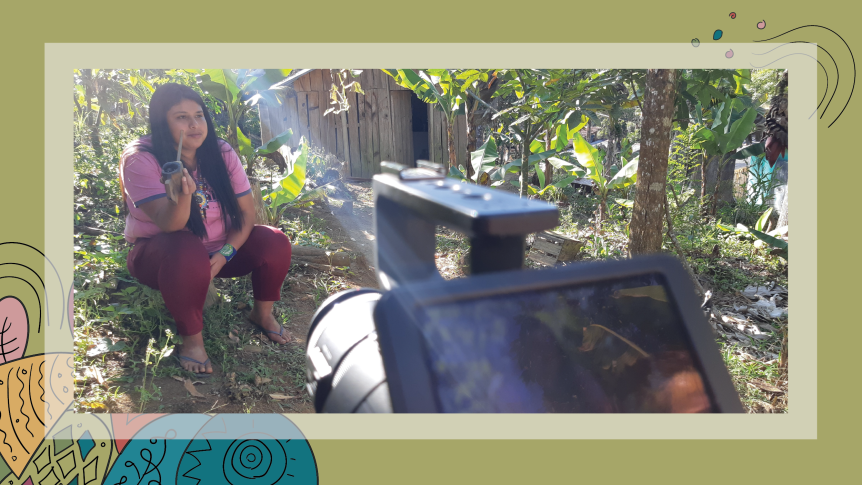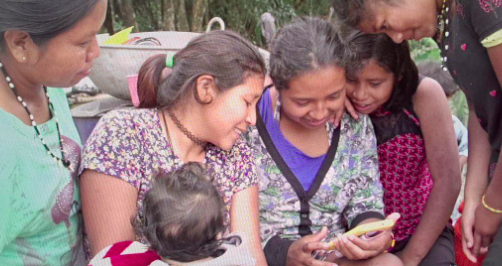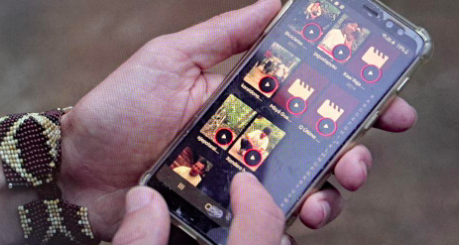
The internet can be a powerful tool for communication and political articulation for communities who need to stand for their rights, lands and ways of life, such as the Guarani Indigenous people in Brazil. But it can also be the means by which some threats are channeled, as one can learn from the experiences of 21 villages in the Tenondé Porã Guarani Indigenous territory.
They have historically suffered from a lack of internet connectivity since commercial providers have not ventured here. This has been an obstacle to communicate among the various villages in this region and even with other Guarani communities who inhabit the country and South America.
To overcome this challenge, they started building their own community network in 2021 in a project in partnership with the Brazilian civil society organisation and APC member Intervozes. Once they took matters into their own hands, they realised that the struggle for connectivity was also a struggle for autonomy. The internet could bring both positive and negative impacts on their livelihoods and it was up to them to decide when and how to be connected.
Intervozes explains in their project report:
"The arrival of the internet in the villages facilitated this communication and also the political influence of the Guarani in the non-indigenous world. However, the same digital highway that promoted these benefits also brought problems. Like an open concrete road in the middle of the forest, the internet has devastated some structures of the community way of life."
This reflection gave birth to the Nhandeflix network in 2022 – an Indigenous-centred content platform that works on their own intranet. This inspiring project shows how collective processes and agreements can be a better solution for people’s needs than some trendy digital technology. “A community network is not only an alternative to the issue of lack of connection but it can be thought of as a process to support communities to seek greater technological and territorial autonomy,” believes Pedro Ekman, one of the project’s coordinators in Intervozes.

Community networks as an open process
The 21 villages of the Tenondé Porã Guarani Indigenous territory are located in an area that extends from the south of São Paulo city to the coast of the state and preserves part of the remaining Atlantic Forest in this region. The villages are also proud to be home to one of the last "living rivers" in the city of São Paulo, a megalopolis that generates a lot of pollution in the surrounding waters.
All these lands suffered in the past from the passage of a railway, and the Indigenous villages have formed a committee to manage together the compensation provided for in Brazilian law for environmental projects that cause significant environmental impact, as well as to politically articulate the defence of their lands and rights in Brazil. In this scenario, the need for internet access is linked to historical processes of organisation and communication for political mobilisation of Indigenous peoples. In an area bereft of commercial access operators, the community network has emerged as an alternative to bridge this connectivity gap.
A community network can vary a lot depending on and responding to local contexts. In this project, the community network was envisioned as a way to promote local access through an intranet and also connect the villages to the internet by building a Wi-Fi infrastructure locally and contracting a satellite link. Its costs are shared among the community members. While installing high-power routers in the 21 villages as a way to expand connectivity, Intervozes and its partners facilitated dialogues and workshops with the communities so that specific agreements for internet access could be established in each village.
In this process, the community members also had to deal with an emerging conflict regarding the use of the internet, especially between young people and adults: community life was being compromised by the excessive and uninterrupted capture of attention by the big corporations in the internet, especially among the youth.
Nhandeflix prioritises Indigenous content
From the need to deal with this conflict, the Nhandeflix platform was born. It works with a menu where Indigenous audiovisual content is served through the local Wi-Fi network, accessible throughout the region without needing any internet. Through various dialogues, each village implemented its own customised internet blocking and time slots for their network access. The idea was to create collective agreements to define periods when internet access would be blocked and during which the local intranet and Indigenous content on Nhandeflix would be prioritised.
While in many countries blocking internet access by governments emerges as an authoritarian measure, the difference in this case is precisely the collective process: each community dialogued and collectively decided what the rules of their community network would be. Prioritising the local network over internet access for a few hours a day emerged as an alternative to foster self-determination and not threaten it.
“The answer to this problem could not be given by an electronic device or something like that; it would need to be built by the community itself, which would have to agree on the use and relationship with the technology,” pointed out Intervozes in their report to a Local Networks initiativeNet community network grant programme that supported this project.
This platform was named by the community as Nhandeflix because it is similar to the streaming platform Netflix but with Indigenous content, since Nhanderecó is the name of the Guarani way of life in their own language.

At first there was no production of local content for the platform, so a committee curated various existing content from the Guaranis and other Indigenous peoples and even some non-Indigenous content that they found interesting. Many of these productions are already on the internet, but they are rarely seen precisely because the internet disperses people’s attention among many other attention-grabbing processes implemented by large corporations. To be available on the intranet, the content is downloaded to a local server that can be reached at any time. Since this server has a limited memory capacity, they also implemented content management processes to periodically update the materials available in Nhandeflix.
According to Intervozes, Nhandeflix was a hit with audiences in the villages. With only the intranet working, the attention of the youngest was drawn to a digital technology focused on the Indigenous way of life instead of distancing them from it. “In this way, some young people volunteered to learn the technical part of building the network and even started to help in its construction and maintenance,” celebrated the organisation in their report.
For Pedro Ekman, a challenge looking to the future is precisely to maintain the engagement that has been generated. "We are starting conversations this year to think about other complementary media, such as eventually a community radio or other content production processes that bring the community closer to their way of life so that they have more tools to deal with the intrusion of all non-indigenous technologies," he pointed out. Meanwhile, Intervozes is finishing a short documentary about this experience, which will soon be available on the internet, but especially on Nhandeflix.
This piece is a version of information shared by Intervozes and its representative Pedro Ekman as part of the project "Connecting the Unconnected: Supporting community networks and other community-based connectivity initiatives" for the Seeding Change column, which presents the experiences of APC members and partners who were recipients of funding through "Connecting the Unconnected" grants and of subgrants offered through other APC projects and initiatives.
Did this story inspire you to plant seeds of change in your community? Share your story with us at communications@apc.org